January 4, 2014
The goal of this tutorial is to introduce participants to a suite of software tools for image-based modeling, simulation, and visualization developed by the NIH/NIGMS Center for Integrative Biomedical Computing (CIBC). This portable flexible collection of interactive tools was designed in particular to support the development of subject specific, image based geometric models for simulation of bioelectric fields, but suite as well as its individual components have been applied to a wider set of problems. The tools in the suite are: ImageVis3D, for visualization of large scale data; Seg3D, for general purpose user-guided image segmentation; Shapeworks, statistical shape analysis software; Cleaver, software for creating surface and volume meshes from segmented image data; SCIRun, a comprehensive problem solving environment that integrates many of the capabilities of an entire image based modeling pipeline.The tutorial will be a mix of didactic presentations on the component steps of image based modeling, simulation, and visualization; hands on practice with the software, and cases studies on real world applications.
We will provide participants with the software and test data sets. Participants are required to bring their laptop computers, and if relevant their own data as well. See the list of software requirements before arriving. CIBC staff and developers will be on hand to help participants learn the programs, port their data, and generate useful results. We especially encourage participation by students, post docs, and technical users and software developers.
The tools in the suite include:
- Seg3D, for general purpose user-guided image segmentation;
- ImageVis3D, for visualization of large scale data;
- Shapeworks, statistical shape analysis toolkit;
- Cleaver, software for creating surface and volume meshes from segmented image data;
- SCIRun, a comprehensive problem solving environment that integrates many of the capabilities of an entire image based modeling pipeline.
The tutorial will be a mix of didactic presentations on the components of image based modeling, simulation, and visualization; hands on practice with the software; and cases studies of real world applications. We will provide participants with the software and test data sets and encourage participants to bring their laptop computers, and, if relevant, their own data. CIBC members and developers will be on hand to help participants learn the programs, port their data, and generate useful results. We especially encourage participation by students, post docs, and technical users and software developers.
Intended audience
Scientists and engineers with an interest in applications of image processing, modeling, simulation, and visualization to their biomedical research.
The goal of this tutorial is to introduce participants to a suite of software tools for image-based modeling, simulation, and visualization developed by the Center for Integrative Biomedical Computing (CIBC), an NIH-supported Biomedical Technology Research Center.
This portable flexible collection of interactive tools was designed to support the development of subject-specific, image-based geometric models for simulation of bioelectric fields. The tools, individually or as a suite, have also been applied to a wider set of problems.
Attendees will:
- learn about the major features of these software packages through presentations and case studies
- have an opportunity for hands-on instruction in our software, in laboratory sessions built into the workshop schedule
- interact with other users and technical personnel from our Center
- be able to try the tools on their own data with help from CIBC members
Organizers and Team
 Rob MacLeod was trained in physics, electrical engineering, and physiology & biophysics and is an associate professor of Bioengineering and Medicine at the University of Utah. He is an associate director of the Scientific Computing and Imaging (SCI) Institute and the Nora Eccles Harrison Cardiovascular Research and Training Institute (CVRTI). He is an associate chairman and director of the undergraduate program in Biomedical Engineering and co-founder of the Center for Arrhythmia Research and Management (CARMA). His research interests include computational electrocardiography, experimental investigation and clinical detection of cardiac ischemia, cardiac arrhythmias, both atrial and ventricular, and defibrillation.
Rob MacLeod was trained in physics, electrical engineering, and physiology & biophysics and is an associate professor of Bioengineering and Medicine at the University of Utah. He is an associate director of the Scientific Computing and Imaging (SCI) Institute and the Nora Eccles Harrison Cardiovascular Research and Training Institute (CVRTI). He is an associate chairman and director of the undergraduate program in Biomedical Engineering and co-founder of the Center for Arrhythmia Research and Management (CARMA). His research interests include computational electrocardiography, experimental investigation and clinical detection of cardiac ischemia, cardiac arrhythmias, both atrial and ventricular, and defibrillation.  Elizabeth Jurrus is currently serving a joint appointment for Pacific Northwest National Laboratory at the Scientific Computing and Imaging (SCI) Institute at the University of Utah. Her role at SCI includes technical manager for the NIH/NCRR Center for Integrative Biomedical Computing, where she helps manages the development of open source tools for biomedical image-based modeling, biomedical simulation and estimation, and the visualization of biomedical data. Elizabeth also works as a liaison between the National Center for Microscopy and Imaging Research at UCSD and the image processing group at the SCI Institute to develop unique algorithms and tools for machine learning and image segmentation of neural processes in electron microscopy images. Current research interests focus on developing machine learning techniques for feature detection and the automated analysis of image data.
Elizabeth Jurrus is currently serving a joint appointment for Pacific Northwest National Laboratory at the Scientific Computing and Imaging (SCI) Institute at the University of Utah. Her role at SCI includes technical manager for the NIH/NCRR Center for Integrative Biomedical Computing, where she helps manages the development of open source tools for biomedical image-based modeling, biomedical simulation and estimation, and the visualization of biomedical data. Elizabeth also works as a liaison between the National Center for Microscopy and Imaging Research at UCSD and the image processing group at the SCI Institute to develop unique algorithms and tools for machine learning and image segmentation of neural processes in electron microscopy images. Current research interests focus on developing machine learning techniques for feature detection and the automated analysis of image data.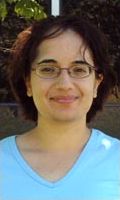 Ayla Khan received her Bachelor of Computer Science in 2002 from Carleton University (Ottawa). As a developer for the CIBC, Ayla is the principal SCIRun developer and has also worked on other CIBC software products including Seg3D and BioMesh3D. Ayla is also working on her MS in the University of Utah's Computational Engineering and Science program.
Ayla Khan received her Bachelor of Computer Science in 2002 from Carleton University (Ottawa). As a developer for the CIBC, Ayla is the principal SCIRun developer and has also worked on other CIBC software products including Seg3D and BioMesh3D. Ayla is also working on her MS in the University of Utah's Computational Engineering and Science program.
CIBC Team
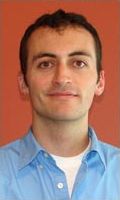 Josh Blauer |
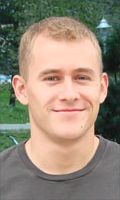 Jonathan Bronson |
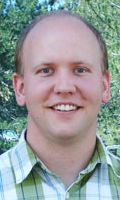 Brett Burton |
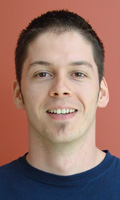 Moritz Dannhauer |
 Shireen Elhabian |
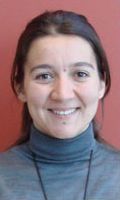 Corinne Garcia |
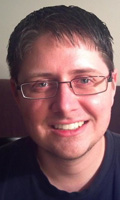 James Hughes |
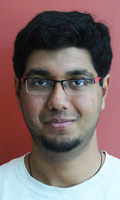 Prateep Mukherjee |
 Jess Tate |
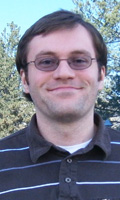 Daniel White |
Agenda
| 8:00 - 8:30 | User Setup and Software Installation | |
| 8:30 - 8:45 | Introduction | Rob MacLeod |
| 8:45 - 9:00 | Case Study I: Image based analysis of patients with atrial fibrillation | Rob MacLeod |
| 9:00 - 9:15 | Demo I: Seg3D demo and tutorial | Rob MacLeod & Jess Tate |
| 9:15 - 10:00 | Lab I: Segmentation with Seg3D Seg3D tutorial |
|
| 10:00 - 10:15 | Break I | |
| 10:15 - 10:30 | Case Study II: ImageVis3D as a teaching tool for tomorrow's scientists | Liz Jurrus |
| 10:30 - 10:45 | Demo II: ImageVis3D demo and tutorial | Liz Jurrus & James Hughes |
| 10:45 - 11:30 | Lab II: Visualization with ImageVis3D ImageVis3D 1.3 Documentation |
|
| 11:30 - 11:45 | Case Study III: Statistical shape modeling use cases | Shireen Elhabian |
| 11:45 - 12:00 | Demo III: ShapeWorks demo and tutorial | Shireen Elhabian & Prateep Mukherjee |
| 12:00 - 12:45 | Lab III: Shapeworks ShapeWorks Manual |
|
| 12:45 - 1:45 | Lunch/Open Lab | |
| 1:45 - 2:00 | Case Study IV: Geometric modeling of the heart and head | Rob MacLeod & Moritz Dannhauer |
| 2:00 - 2:15 | Demo IV: Cleaver demo and tutorial | Moritz Dannhauer & Jonathan Bronson |
| 2:15 - 3:00 | Lab IV: Mesh generation with Cleaver | |
| 3:00 - 3:15 | Break II | |
| 3:15 - 3:30 | Case Study V: Simulation of brain potentials from transcranial stimulation | Rob MacLeod & Moritz Dannhauer |
| 3:30 - 3:45 | Demo V: SCIRun demo and tutorial | Moritz Dannhauer & Jess Tate |
| 3:45 - 4:30 | Lab V: Simulation with SCIRun Basic Tutorial Defibrillation Tutorial Ischemia Model Tutorial ECG Toolkit Guide |
|
| 4:30 - 4:40 | Summary and wrap Up | Rob MacLeod |
| 4:40 - 5:25 | Open lab |
Software Requirements
Graphics cards must support OpenGL 2.0 or greater (not available on older Intel embedded graphics cards).
Windows: XP or later, 7/8 recommended
OS X: 10.6+
For OS X 10.8+, AMD/ATI cards are not recommended (see FAQ).
CPU: minimum Core Duo or higher, recommended i5 or i7
Memory: minimum 4GB, recommended 8GB or more
Graphics Driver: minimum OpenGL 2.0 or higher (Not available on older Intel embedded graphics cards)
Graphics Memory: 128MB, recommended 256MB or more
Graphics cards must support OpenGL 2.0 or greater (not available on older Intel embedded graphics cards).
Windows: XP or later, 7/8 recommended
OS X: 10.6+
The Seg3D2 installer is not currently signed. The unsigned installer can be run on OS X 10.8+ by control-clicking (or right-clicking if 2 button mouse support is enabled) on the installer package and selecting open.
CPU: minimum Core Duo or higher, recommended i5 or i7
Memory: minimum 4GB, recommended 8GB or more
Graphics Driver: minimum OpenGL 2.0 or higher (not available on older Intel embedded graphics cards)
Graphics Memory: 128MB, recommended 256MB or more
Graphics cards must support OpenGL 2.0 or greater (not available on older Intel embedded graphics cards).
Windows: Windows XP or later
OS X: 10.7+
Graphics: NVIDIA GeForce 9 series or better (i.e. GeForce 300M or later), or ATI/AMD Radeon HD 2400 series or better.
Graphics cards must support OpenGL 2.0 or greater (not available on older Intel embedded graphics cards).
Windows: XP or later
OS X: 10.6+
Graphics cards must support OpenGL 2.0 or greater.
Windows: 7/8 recommended
OS X: 10.6+
CPU: recommended Core Duo i5 or higher
Memory: recommended 32GB or more
Graphics Driver: minimum OpenGL 2.0 or higher (Not available on older Intel embedded graphics cards)
Graphics memory: recommended 2GB or more






